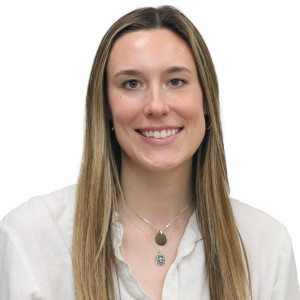OCD, or obsessive compulsive disorder, is when an individual has repeated and unwanted intrusive thoughts and engages in repeated and impairing behaviors (compulsions) to ease the distress surrounding these thoughts. A substance use disorder (SUD) is a mental health condition where an individual engages in repeated and persistent substance use despite harmful consequences due to changes in the brain from the repeated use. According to a clinical study published in the Journal of Anxiety Disorders, around 24% of those diagnosed with OCD have a co-occurring alcohol-use disorder and around 18% meet criteria for another substance use disorder. Substances often provide relief from overwhelming and uncomfortable feelings, such as the stress and discomfort of obsessions and compulsions. Oftentimes, substance use disorders and disorders like OCD work together (think of that cartoon where they are trying to get the water out of the sinking boat with a bucket), but with time, both begin to feel unmanageable.
So what comes first, the chicken or the egg?
OCD symptoms usually begin at a young age, but many individuals will go a significant period of time before receiving a diagnosis. Substances can, at first, appear to provide relief from the distress of intrusive thoughts and compulsions. In the beginning of active substance use, some individuals with OCD may feel in-control and like they are being given a much-needed reprieve from hours spent burdened by their obsessions and compulsions. The substance can feel like a savior, like you finally have control over this intrusive thought thing, like the beginning of a bad relationship where you make each other playlists and frolic in a field and then things get kind of dark. Substance Use Disorders are just like that because they are often hallmarked by a gradual loss of control. The amount of time thinking about the substance and how to obtain the substance gradually increases. Psychological dependence is then compounded by physical/medical dependence, and this is when OCD and SUD begin to split into their own separate entities.
What’s a compulsion?
The language around these two conditions can be confusing, so I’ll try to clarify some terms. Sometimes we hear substance use disorder being defined as the “compulsive” use of substances, but it is important to understand that the word compulsion in the context of OCD and SUDs are not the same thing. Compulsions in OCD are either mental behaviors or physical actions that individuals feel they must engage in as an attempt to feel some relief from distressing thoughts. For example, someone who compulsively washes their hands may be trying to find relief from thoughts that they could be ‘dirty’ or to avoid a feared consequence if they do not engage in this behavior, such as spreading an illness. Substance use disorder involves chemical changes to the brain surrounding reward and control. In OCD, compulsions are reinforced through negative reinforcement because of the relief from anxiety that they provide. In SUDs, compulsive substance use is reinforced through both positive and negative reinforcement, due to the pleasure derived from the substance, but also from the symptom relief. So while substance use is referred to as a compulsive behavior, compulsions in OCD and SUDs require different treatment approaches.
So how do you even start to look for treatment?
In OCD treatment, we typically emphasize flexibility and sitting with the uncertainty that our worst fears have the potential (however minute) of coming true. This is where exposure work (specifically exposure and response prevention, or ERP) comes in. Instead of avoiding triggers, the goal is to intentionally be with the unwanted thought or feeling without engaging in compulsions so individuals can learn that they can tolerate the discomfort without relying on their rituals for relief. Exercises like shifting attention from intrusive thoughts and working to engage in other activities while feeling anxious can also be very beneficial for individuals with OCD. Learning takes place when the distress resolves despite the absence of compulsions. The brain adopts a more flexible relationship with the unwanted thoughts that do not have to include responding compulsively.
Treatment for substance use disorders is a little different. In SUD treatment, a large focus is on overall wellness and recognizing triggers and warning signs of relapse. A majority of individuals work toward total abstinence from substances and there cannot always be flexibility in that. Certainty and a kind of inflexibility around sobriety can be important due to the brain’s dependence on the substance and the dangers involved in using. The differences in treatment are largely reliant on the way the brain is changing during the healing process with each. With OCD treatment, the brain begins to learn safety cues and tolerance through the exposure of fear stimuli in the absence of compulsions. In SUD treatment, the brain needs time to heal and reset back to “baseline.” During an active substance use disorder, the brain’s dopamine and pleasure center is hijacked and tolerance increases. More of the substance is required to achieve the same effects, and eventually, the brain becomes dependent on substances for everyday baseline functioning. Especially during early recovery, knowing triggers and being able to prepare and avoid/have a plan when they come up is essential. In OCD treatment, the focus is on reducing avoidance of OCD triggers and being more okay with being uncertain and flexible. In SUD treatment, there is more of a focus on working to limit chances for relapse with coping ahead and the utilization of a support system, especially in early recovery.
While there are key differences in the conceptualization and treatment of OCD and SUD, there are some meaningful similarities in the treatment as well! For both OCD and SUDs, recognizing cognitive distortions and challenging unhelpful thinking through cognitive behavioral therapy (CBT) can be very helpful. Both individuals with OCD and SUD tend to have strong reactions and negative judgments towards the thoughts they are having. Self-compassion and working to disengage from unhelpful thought patterns are helpful, whether it is an intrusive thought or it is a craving. Urge surfing is a popular term that one will hear in both treatments as well. This is the idea that an urge (whether it be an urge to engage in a compulsion or an urge to use a substance) are both time-limited experiences. On average, a substance use craving will last approximately 15-20 minutes. No thought or feeling is permanent, but judgement and actively trying to make an urge go away will only make it come on stronger (think the pink elephant phenomenon, if I tell you not to think about a pink elephant what are you thinking?). Because of this, mindfulness and recognition that thoughts are not threats are both important in treatment. Using coping skills and recognizing an urge are important because, remember, both have a time limit and won’t last forever, we just have to give time a chance to take care of it.
So is it possible to get treatment for both at the same time?
It absolutely is, and something one should be commended for doing because it’s hard work! It is normal in the beginning of OCD work for the symptoms to increase and the client to be uncomfortable sitting with the intrusive thought without engaging in compulsions for relief. The brain is just starting to learn that you can handle the intrusive thought without using a compulsion, and the process of learning to feel safe when you previously thought you were in danger is inherently uncomfortable. This is the same for the beginning stages of recovery work for a SUD. The coping mechanism that the individual has been using (substances) is no longer being used, which can cause an increase in cravings as the brain is rewiring and new skills are being developed. Both an increase in discomfort from resisting compulsions in OCD and an increase in cravings after abstaining from substances are to be acknowledged as signs of hard work being done and a good time to reach out for support, not self-criticism (don’t be mean to yourself, please!). In the beginning stages of recovery from a SUD, withdrawal symptoms such as fatigue, cloudiness, and physical symptoms may cause mental health treatment to move somewhat slower because the body needs time to recover and readjust back to not relying on substances to function. Similarly, those in the early stages of OCD recovery may feel fatigued or mentally taxed. That is all okay! It means the body is being taken care of and given the chance to recover. I’ve had a lot of clients throw around the word “failing” at this point in the process. Someone told me one time they just felt like laying in bed and watching The Real Housewives all day, and for a couple of days they did. But that’s okay and not a sign of failure! Going through withdrawal and dealing with symptoms is no joke, it’s okay to let your body rest if it needs to.
So who should you look for in getting treatment? It can be beneficial to look for a therapist who specializes or has experience in both OCD treatment and SUD treatment, but sometimes it may require seeing separate specialists. If that’s the case, making sure that both therapists communicate throughout the treatment is important so that everyone is on the same page. When considering which to treat first, it is important to remember that most co-occurring disorders (SUD and mental health disorder) feed off one another and it is most beneficial, because of this, to treat them at the same time. The process may move at a slower rate than you’d expect at first because the body and brain are healing while you learn completely new skills that take time to internalize. This is all normal. Taking this on is no small feat. Remember that you are not alone, and recovery is possible!
-

Julianna Eckman, LCPC, LGADC
Therapist, The Center for OCD and AnxietySpecialties:Anxiety Disorders, Obsessive-Compulsive Disorder (OCD)
